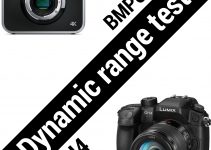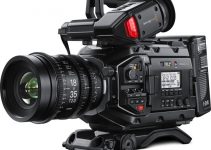The good thing about memory cards is that they have standards that should make it easy to find the appropriate card for your camera and settings. The bad thing about memory cards is that there are so many standards. There are even a bunch more cameras coming out with dual card slot types.
One of these is the Sony a7 IV and you might be wondering exactly what cards you should pick up for making the most of it. If you are asking this question you should know you are not alone. Luckily, filmmaker Stefan Malloch has thought about this already and put together a handy guide.
Let’s talk about the slots first. The Sony a7 IV is unique with its dual card slots. One is a standard UHS-II SD slot while the other is a combo CFexpress Type A/UHS-II SD card slot. We first started seeing these on the a7S III and a1, so it is a little surprising to see it trickle down to the a7 IV. It is especially odd when you consider that you don’t need a CFexpress card for any of the video modes.
Talking about modes, you can actually record some 4K 60p using a V30 card, though a V90 will be required for the best quality options. You don’t need to spend the money on CFexpress today. Plus, CFexpress cards are not available in as large sizes as SD. That speed is nice but not everything.
Your go-to choices should be UHS-II V90 SD cards. And Stefan’s pick is the ProGrade Digital 256GB UHS-II Card. That is a lot of space. You don’t need to go that big, but it is something to consider depending on your shooting needs.
He actually created a nice breakdown or recording times on a 256GB card:
- XAVC HS 4K 10-bit 4:2:0 — 60p 40M: 10 hours 42 minutes / 24p 100M: 5 hours 23 minutes
- XAVC S 4K 8-bit 4:2:0 — 60p 150M: 3 hours 34 minutes / 24p 60M: 8 hours 44 minutes
- XAVC S-I 4K 10-bit 4:2:2 — 60p 600M: 55 minutes / 24p 240M: 2 hours 17 minutes
You can easily do the math for other cards based on this since it scales properly.
If you are going to be using the photo modes a bit there are some other considerations. The a7 IV can hit 10 fps, though the buffer will come into play here if you use that for extended bursts. This is when CFexpress might come in handy since it’ll extend your burst times.
However, the UHS-II cards will get you a burst of 60-70 frames, which will be plenty for most people. Slower cards will slow this down dramatically. V60 cards were just over 30 frames and V30 cards were at 28 frames, with them clearing the buffer even more slowly.
At the end of the day you should likely buy what is within your means, but invest in something good. Balance size to speed and cost here, which will likely take CFexpress off the table.
V90 cards are your best balance in my opinion, though if you need more space then V60 will get the job done. Just think about it a bit.
For alternate card options there are a few others to check out:
- Speed and Durability: Sony SF-G Tough Series
- A V60 Option: Lexar Professional 1667x
- V30 Pick: SanDisk Extreme PRO UHS-I
Hopefully this gave you a good idea of which cards to pick up.
[source: Stefan Malloch]
Order Links:
- Sony a7 IV Mirrorless Camera (B&H, Amazon)
- ProGrade Digital 256GB UHS-II SDXC Card (B&H, Amazon)
- Sony 128GB SF-G Tough Series UHS-II SDXC Card (B&H, Amazon)
- Lexar 256GB Professional 1667x UHS-II SDXC Card (B&H, Amazon)
- SanDisk 256GB Extreme PRO UHS-I SDXC Card (B&H, Amazon)
Disclaimer: As an Amazon Associate partner and participant in B&H and Adorama Affiliate programmes, we earn a small comission from each purchase made through the affiliate links listed above at no additional cost to you.



